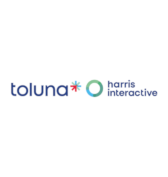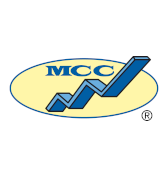DUBLIN–(BUSINESS WIRE)–The “Bladder Scanners Market – Growth, Trends, COVID-19 Impact, and Forecasts (2022 – 2027)” report has been added to ResearchAndMarkets.com’s offering.
The Bladder Scanners Market is estimated to be USD 134.12 million in 2021. It is expected to reach USD 184.15 million by 2027, registering a CAGR of 5.54 % from the forecast period of 2022 to 2027.
The growing burden of cancer related to the urinary tract creates the need for diagnostics and scanning devices and thus propels the growth of the market. For Instance, the Global Cancer Observatory Statistics 2020 reported that bladder cancer and prostate cancer are among the top 10 high incidence cancer around the world.
The increasing accessibility to technologically advanced scanners also propels the growth of the market. For Instance, in March 2021, Lingen Davies Cancer Fund funded a new bladder scanner for the radiotherapy department at Royal Shrewsbury Hospital. The new bladder scanner will allow a more accurate reading and will prevent a further CT Scan, and therefore increase capacity in the department allowing patients with bladder, prostate, gynecological, or colorectal tumors to have access to this enhanced scanning equipment
Key Market Trends
Portable Bladder Scanners Segment is Expected to Hold a Significant Market Share
The major advantage of the portable ultrasound bladder scanner is to be a user-friendly diagnostic procedure with high-end accuracy. Another main benefit of a portable bladder ultrasound scanner is its portability, reliability, cost-effectiveness, and non-invasiveness.
The increasing prevalence of urological diseases and the rising preference for Portable Bladder Scanners use are the key factors for the growth of the bladder scanners market. According to a research study by Sedighe Batmani et al., published in BMC Geriatrics Journal March 2021, the study results found that the highest prevalence of urinary incontinence was reported to be 45.1% in older women in Asia. Health care professionals (primarily nurses) uses the device to measure postvoid residual (PVR) urine volume and prevent unnecessary catheterization, and these products may improve diagnosis and differentiation of urological problems which helps in management and treatment of urological diseases, including the establishment of voiding schedules, study of bladder biofeedback, fewer urinary tract infections (UTIs), and monitoring of potential urinary incontinence after surgery or trauma.
Moreover, several research studies undertaken by researchers have depicted better results using the portable bladder scanner. For instance, according to the research article by John Graham MD et al., published in 2019, found that a portable bladder scanner accurately measures PVR in patients with pelvic organ prolapse and could be considered as an alternative to catheterized assessment.
Therefore, increasing prevalence of urological diseases and the rising preference for Portable Bladder Scanners use are the key factors for the growth of the bladder scanners market.
North America is Expected to Dominate the Market and Expected to do Same in the Forecast Period
North America is expected to hold a dominating position globally in the bladder scanners market due to the rising prevalence of urological diseases, and high healthcare expenditure. New product approvals, growing prevalence of urological disorders, increasing diagnostic procedures, and increasing utilization of mobile portable ultrasound devices in clinics and hospitals contribute to the growth of the bladder scanners market. According to the National Institutes of Health data updated in September 2021, chronic kidney disease (CKD) affects nearly one-seventh of all adults in the United States (i.e., 37 million people). The risk of CKD is much higher for Americans with diabetes or high blood pressure, the two most frequent causes of kidney disease. Kidney disease affects nearly one-third of diabetics and one-fifth of those with high blood pressure. Heart disease and a family history of renal failure are two more risk factors for kidney disease.
Additionally, as per the Canadian Institute for Health Information and the Canadian Patient Safety Institute, data updated March 2021, Urinary tract infections (UTIs) are the fifth most common type of healthcare-associated infection, with an estimated 62,700 UTIs in acute care hospitals (US) every year. UTIs additionally account for more than 9.5 percent of infections reported by acute care hospitals. Hence, increasing chronic diseases led to an upsurge in demand for bladder scanners, which in turn, increased the demand for Bladder Scanners in the country.
Key Topics Covered:
1 INTRODUCTION
1.1 Study Assumptions
1.2 Scope of the Study
2 RESEARCH METHODOLOGY
3 EXECUTIVE SUMMARY
4 MARKET DYNAMICS
4.1 Market Overview
4.2 Market Drivers
4.2.1 Increasing Prevalence of Urology Related Disorders
4.2.2 Technological Advancements in Bladder Scanner
4.3 Market Restraints
4.3.1 Stringent Regulatory Reforms
4.4 Porter’s Five Force Analysis
5 MARKET SEGMENTATION (Market Size by Value – USD million)
5.1 By Product
5.2 By End User
5.3 Geography
6 COMPETITIVE LANDSCAPE
7 MARKET OPPORTUNITIES AND FUTURE TRENDS
Companies Mentioned
- Becton, Dickinson and Company (C. R. Bard Inc.)
- Caresono
- GE Healthcare Inc
- Mcube Technology Co., Ltd
- Echo-Son S.A.
- Patricia Industries (LABORIE)
- Roper Technologies, Inc
- SRS Medical Systems, Inc
- Vitacon
For more information about this report visit https://www.researchandmarkets.com/r/73nfrq
Contacts
ResearchAndMarkets.com
Laura Wood, Senior Press Manager
press@researchandmarkets.com
For E.S.T Office Hours Call 1-917-300-0470
For U.S./CAN Toll Free Call 1-800-526-8630
For GMT Office Hours Call +353-1-416-8900



















